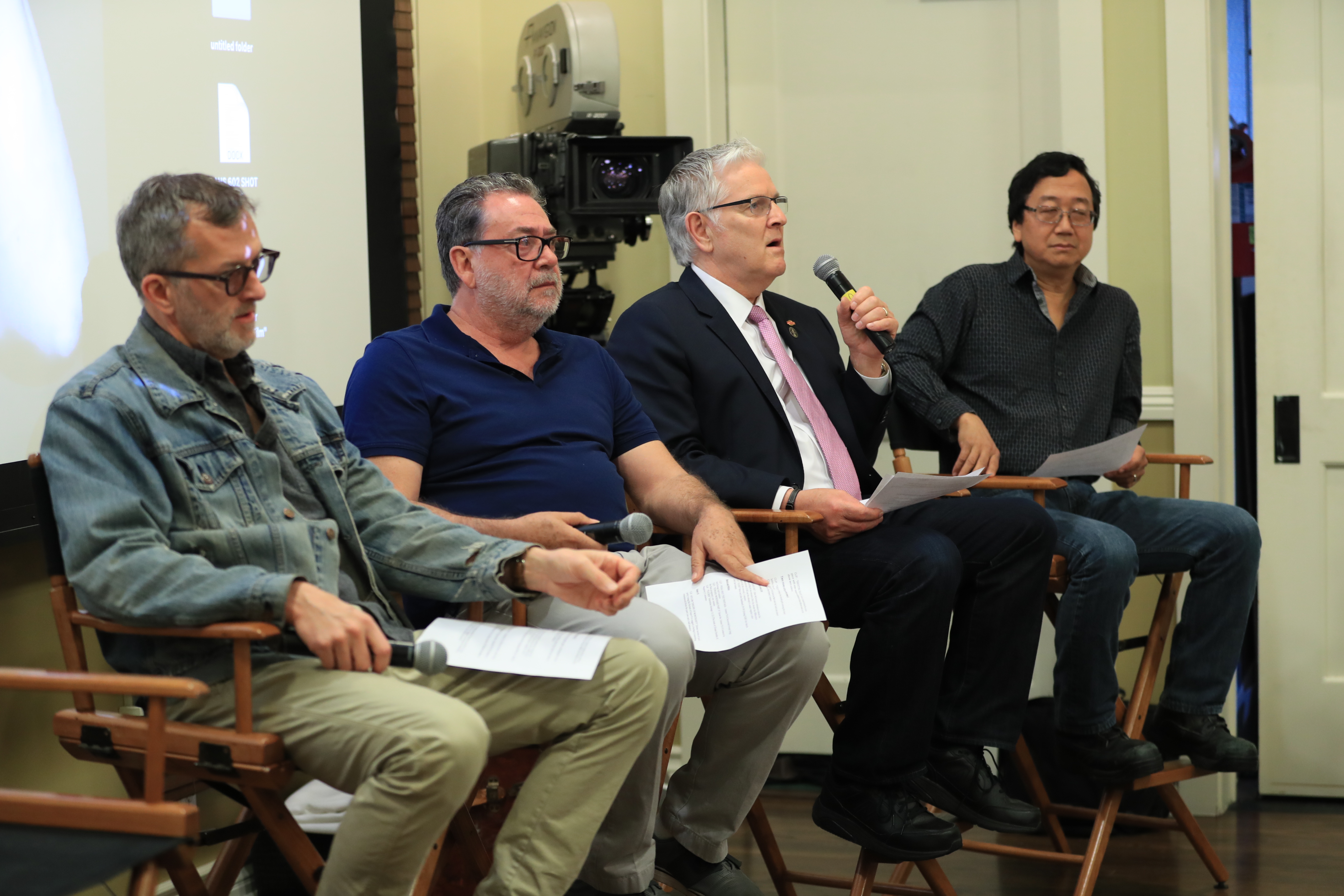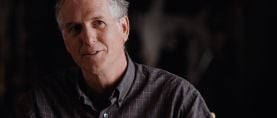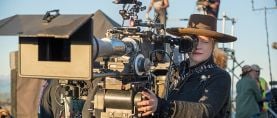
ICS 2016 – Part IV: The Continuing Relevance of Film
The International Cinematography Summit offered a unique opportunity for motion picture professionals to discuss and demonstrate ideas.
ICS 2016
For this unique four-day event, the American Society of Cinematographers invited peers from around the world to meet in Los Angeles, where they would discuss professional and technological issues and help define how cinematographers can maintain the quality and artistic integrity of the images they create.

In this segment of the International Cinematography Summit (ICS), Roberto Schaefer, AIC, ASC introduced a panel on the future of shooting on film, moderated by IMAX Chief Quality Officer David Keighley. The panel focused on one of the last remaining network TV shows to shoot film, American Horror Story: Hotel, and included cinematographer Michael Goi, ASC; production designer Mark Worthington; and Kodak executive Bruce Berke.
Keighley noted that, “we’re in the midst of a renaissance of shooting in film,” pointing out that Christopher Nolan is using 65mm film and IMAX to tell the World War II story Dunkirk. “We’re playing our part in keeping film alive,” said Keighley. “We’re strong advocates of film.”
Goi reported that the story in American Horror Story: Hotel takes place over many different eras, each represented by “manipulating stocks.”
“If we left that to postproduction – when the show is slammed by deadlines — it wouldn’t go to air looking like it does,” he said.

An episode of AHS: Hotel, said Worthington, is “like doing a feature film in half the time. [And] I’m creating a space that affects the nature of the narrative.”
Goi pointed out that Worthington is “acutely aware of the cinematography and lighting. That’s key to our relationship. When he builds sets, he builds lighting into it. Shooting film enables me to go with lighting that’s a little more audacious, out of the box. For example, Mark will find a lamp fixture from 1910 that casts amazing shadows on the wall. If I shot with a digital camera, we wouldn’t get all the nuances.”
Worthington agreed: “There is so much more detail with film.”
The signature of AHS is “big and wide,” Goi described. “We use a 6mm lens for master shots and a 10mm lens for close-ups. The sets are so detailed and amazing that I want you to see everything, even if it’s a close-up. That’s the opposite of the TV trend, and here we came with our big lenses and shot in a way that shook everyone up.”
Berke described that Goi asked him to supply “all kinds of film” — 35mm, Super 16mm —and all kinds of stock. “We were able to locate some of the last reversal in the world that we got him for the show,” Berke said. “And Michael is right about the set. I can never remember being on a set like the main one in this season. Michael always had such innovative ideas and we were challenged with making it look like it does.”
Goi credits Berke as being his “go-to person” when he needed a different look. Among his many experiments, Goi explained he shot using high-con sound recording film, employed bleach-bypass processing and also used color reversal for certain modern-day sequences. “I still have 800 feet of 5285 [Ektachrome 100D film] in my refrigerator at home,” he reports. Goi also loves the look of real black-and-white film stock: “Shooting and lighting for real black-and-white is an entirely different in mood, tone and texture. For a sequence of fetish porn from the 1930s, we unspooled the film on the floor, sprayed it with water and dried it with a blow dryer. The result was entirely in-camera; we didn’t have to create it in post.”
Goi is also enthused about Kodak’s re-introduction of the Super 8 film camera at CES this year. “A lot of Super 8 is being used in the professional and consumer market,” said Berke. “Kodak hopes it’ll be a way of shooting film.” Goi recalled one project he worked on for which he suggested shooting Super 8 and the producers said no. “For four hours, they wrestled with [our resulting footage] in postproduction to make it look like Super 8,” he recalled.
In a separate presentation, Guillermo Navarro, ASC, AMC addressed the issue of “The Life of Film Language.”
“One of the most important things we have as cinematographers to maintain our roles and the control of what we do is the film language itself,” Navarro explained. “But we have to know what it is. It’s a personal search; it’s your vision.”

Digital, Navarro said, is “only 0s and 1s” and is “no longer a shot.”
“We’re destroying the very sense of what’s important in our work, which is the use of a language — that it’s our tool,” he continued. “The negative belongs to the cinematographer, it’s our medium, our canvas. This whole industry owes its life to the existence of film.”
He compared a film negative with an original art piece hanging in a museum. “I can pay $9.99 for a print at Walmart,” he said. “There’s a whole world of forgery. In digital, it’s all clones.”
When the panel opened up to questions and comments, ICS attendee Elen Lotman, ESC, recounted how, when students at her film school were able to learn to shoot with film, “They were completely reborn. It made a huge difference,” she said.
Berke reports that Kodak is committed to keeping film alive: “We want to see it be around for another 100 years.”

Keighley says IMAX is pursuing the placement of better projectors in museums, “so people won’t be afraid of running film. It’s important to keep that pipeline alive.”
“It’s a matter of great urgency,” concluded Goi. “The first to be lost will be any content not covered by major studio agreements. Indie films, documentaries and student films will lose their data. It will be a shame to see what we’re losing that hasn’t been captured on film.”






